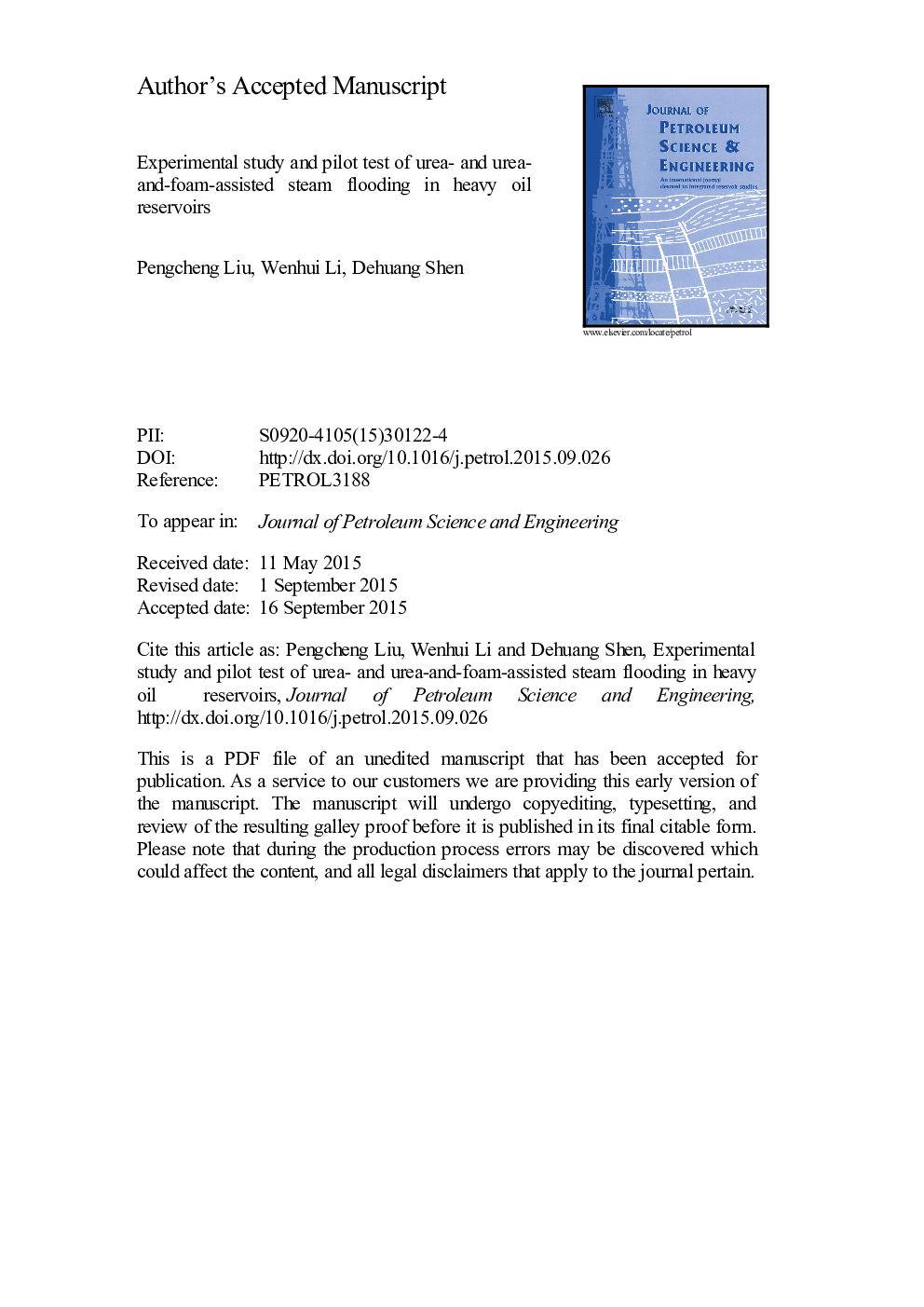| Article ID | Journal | Published Year | Pages | File Type |
|---|---|---|---|---|
| 8126382 | Journal of Petroleum Science and Engineering | 2015 | 18 Pages |
Abstract
During steam flooding in heavy oil reservoirs, steam override and channeling often cause high residual oil saturation. To quantify and alleviate these phenomena, a 3-D experimental model for urea- and urea-and-foam-assisted steam flooding was designed and developed. Three comparative experiments were conducted to facilitate the identification of different effects of flooding, including conventional steam flooding (CSF). The system was switched to urea-assisted steam flooding (UASF) and to urea-and-foam-assisted steam flooding (UFASF). A comparison of specific parameters, including instantaneous oil-steam ratio (OSR), instantaneous watercut, difference in pressure between the inlet and outlet, and oil recovery, showed UFASF to be more effective than CSF or UASF with respect to flooding. As indicated by the change in temperature, the UFASF was able to control the steam override and channeling and fully extend the steam chamber effectively. This not only increased the sweep efficiency but also improved the conformance factor of the steam flooding. The experimental results of the UFASF were successfully used to guide a pilot test of the Jin-1 Block at Liaohe Oilfield, China. Results indicated that the UFASF may be a feasible means of improving the oil recovery of the steam flooding in heavy oil reservoirs.
Related Topics
Physical Sciences and Engineering
Earth and Planetary Sciences
Economic Geology
Authors
Pengcheng Liu, Wenhui Li, Dehuang Shen,
